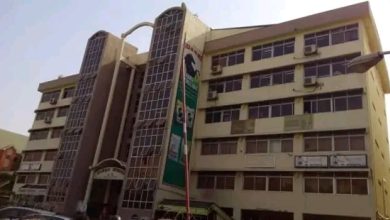Kano State’s Vision: Governor Abba Kabir Yusuf’s Pledge for Comprehensive Development

Kano State’s Vision: Governor Abba Kabir Yusuf’s Pledge for Comprehensive Development
Introduction
Leadership is not just about holding a position; it’s about making a commitment to serve, uplift, and advance a community. Governor Abba Kabir Yusuf of Kano State understands the responsibility that comes with his role and has pledged to bring comprehensive development to the state. In this blog post, we will explore Governor Abba Kabir Yusuf’s vision for Kano State, the aspects of development he aims to address, and the potential impact on the people of Kano.

A Pledge for Progress
Governor Abba Kabir Yusuf’s promise to develop and advance Kano State is a commitment to transforming the state across various aspects of development. His vision is shaped by a deep understanding of the needs and aspirations of the people of Kano. Here are some key areas in which his administration seeks to make a difference:
- Economic Development: Governor Abba Kabir Yusuf recognizes the importance of a vibrant economy. He aims to promote economic growth, support local businesses, and create job opportunities for the people of Kano State.
- Infrastructure: Infrastructure is the backbone of development. The governor has plans to invest in critical infrastructure, such as roads, healthcare facilities, and educational institutions, to ensure that the people of Kano have access to essential services.
- Education: Education is a key driver of personal and societal progress. Governor Abba Kabir Yusuf is dedicated to improving the quality of education in Kano State, ensuring that students have access to a world-class learning environment.
- Healthcare: Access to quality healthcare is a fundamental right. The governor’s administration is committed to improving healthcare facilities and services to enhance the well-being of the people.
- Agriculture: Agriculture is a vital sector in Kano State. The governor aims to support farmers, enhance agricultural productivity, and promote food security.
- Social Services: Social services, such as social welfare programs, housing, and support for vulnerable populations, are key components of the governor’s plan for comprehensive development.
Impact on the People of Kano
Governor Abba Kabir Yusuf’s pledge for development and advancement in Kano State has the potential to bring about a transformation in the lives of its people:
- Economic Empowerment: With a focus on economic development and job creation, individuals and families can experience improved financial well-being and greater opportunities for growth.
- Improved Quality of Life: Investment in infrastructure, healthcare, and education will lead to an improved quality of life, with better access to services and resources.
- Educational Opportunities: Enhancing the educational system will empower the youth of Kano State with the knowledge and skills needed to succeed in an increasingly competitive world.
- Health and Well-Being: Improved healthcare services will lead to better health outcomes and an enhanced sense of well-being for the people of Kano.
- Agricultural Prosperity: Support for the agricultural sector will increase food production and economic stability for farmers.

Economic Development: Nurturing Prosperity and Progress
Economic development is the bedrock upon which nations build their future. It encompasses a range of policies, strategies, and initiatives aimed at improving the economic well-being of a society. The ultimate goal of economic development is to create a robust, resilient, and prosperous economy that benefits everyone. In this blog post, we will explore the essence of economic development, its pivotal components, and its profound impact on a nation and its people.
Understanding Economic Development
- Economic Growth: At the heart of economic development is the pursuit of economic growth. This growth entails increasing a country’s production and income over time, which, in turn, fosters financial stability and improved living standards.
- Diversification: Economic development encourages diversification of the economy. By supporting multiple sectors, such as agriculture, manufacturing, services, and technology, nations can reduce their vulnerability to economic shocks and stimulate innovation.
- Poverty Alleviation: A core objective of economic development is the reduction of poverty and income inequality. Policies and initiatives are put in place to ensure that economic progress benefits all segments of society.
- Quality of Life: Economic development seeks to improve the overall quality of life by providing better education, healthcare, infrastructure, and access to essential services.
- Sustainability: In a modern context, sustainable economic development is crucial. It involves responsible resource use, environmental protection, and the promotion of social equity.
Key Components of Economic Development
- Infrastructure Development: Strong and efficient infrastructure is vital for business development, trade, and overall economic growth. This includes transportation networks, energy systems, and communication technologies.
- Education and Skills: A well-educated and skilled workforce is crucial. Investing in education and vocational training not only enhances productivity but also drives innovation and competitiveness.
- Access to Finance: Access to capital, credit, and financial services is essential for businesses and individuals to invest, expand, and create new opportunities.
- Entrepreneurship and Innovation: Encouraging entrepreneurship and fostering innovation drive economic development. Start-ups and innovation hubs contribute to growth and job creation.
- Good Governance: Effective governance, a transparent legal framework, and the rule of law create a stable business environment that attracts investment and promotes growth.
The Impact of Economic Development
- Poverty Reduction: Economic development plays a pivotal role in reducing poverty rates and improving the standard of living for citizens.
- Job Creation: A growing economy creates job opportunities, reducing unemployment and enhancing household incomes.
- Social Services: Economic development leads to improved education, healthcare, and public services, contributing to a higher quality of life for the population.
- Infrastructure Improvement: Economic development results in better infrastructure, from roads and public transportation to energy and communication networks.
- Innovation and Research: It encourages innovation, research, and development, driving technological advancement and competitiveness on the global stage.

Infrastructure: Building the Foundation for Progress
Infrastructure forms the backbone of any modern society, enabling the smooth functioning of economies, improving living standards, and enhancing the quality of life. It encompasses a wide range of physical and organizational structures and facilities that provide essential services to a community. In this blog post, we will explore the significance of infrastructure, its diverse components, and the transformative impact it has on nations and their people.
Understanding Infrastructure
- Physical and Organizational Structures: Infrastructure includes both tangible physical structures such as roads, bridges, railways, airports, and utilities, as well as intangible organizational structures like legal frameworks, governance systems, and transportation networks.
- Essential Services: Infrastructure is responsible for delivering essential services that underpin modern society, including transportation, energy, clean water, sanitation, and communication networks.
- Long-Term Investment: Infrastructure projects often require significant long-term investment, both public and private, to plan, build, and maintain these critical assets.
Key Components of Infrastructure
- Transportation: Transportation infrastructure encompasses roads, highways, railways, airports, seaports, and public transportation systems. It plays a pivotal role in facilitating the movement of people, goods, and services.
- Energy: Energy infrastructure includes power generation, distribution networks, and alternative energy sources. Reliable energy is crucial for supporting industries, businesses, and households.
- Water and Sanitation: This sector involves the provision of clean water supply, wastewater treatment, and sanitation systems, contributing to public health and environmental sustainability.
- Communication: Communication infrastructure covers telecommunications networks, internet connectivity, and data centers, facilitating global connectivity and access to information.
- Education and Healthcare Facilities: Infrastructure also includes educational institutions, healthcare facilities, and research centers, essential for the well-being and development of communities.
Impact of Infrastructure
- Economic Growth: Well-developed infrastructure supports economic growth by attracting investments, reducing transportation costs, and facilitating trade.
- Job Creation: Infrastructure projects create jobs during construction and maintenance, boosting employment opportunities for the local workforce.
- Quality of Life: Access to essential services such as clean water, electricity, and sanitation enhances the quality of life for residents.
- Business Development: Reliable infrastructure encourages the growth of businesses, stimulating entrepreneurship, innovation, and economic diversification.
- Sustainability: Sustainable infrastructure practices, such as energy-efficient transportation and renewable energy sources, contribute to environmental sustainability and climate change mitigation.
- Disaster Resilience: Robust infrastructure can withstand natural disasters and emergencies, minimizing damage and improving disaster response and recovery.
Empowering Minds: The Transformative Power of Education
Education is the cornerstone of progress and the key to unlocking the potential of individuals and societies. It is a fundamental human right and a powerful instrument for personal and societal transformation. In this blog post, we will explore the significance of education, its impact on individuals and communities, and the role it plays in building a brighter future for all.
The Significance of Education
- Knowledge and Skills: Education provides individuals with knowledge, skills, and competencies that enable them to understand the world, think critically, and adapt to changing circumstances.
- Empowerment: Education empowers individuals by giving them a sense of agency, self-confidence, and the ability to make informed decisions about their lives.
- Social Mobility: It is a pathway to social mobility, allowing individuals to improve their socio-economic status, access better job opportunities, and break the cycle of poverty.
- Citizenship and Civic Engagement: Education equips individuals with the understanding and knowledge to actively participate in civic life, contribute to their communities, and make informed political decisions.
- Cultural Enrichment: Education fosters cultural appreciation, helping individuals understand and respect diversity, and preserving cultural heritage.
Key Components of Education
- Formal Education: This includes structured learning in schools and universities, typically leading to degrees, diplomas, and certifications.
- Informal Education: Informal learning occurs outside traditional educational institutions and includes self-directed learning, experiential learning, and life skills acquired through experiences.
- Non-Formal Education: Non-formal education includes organized, systematic learning outside formal institutions, such as vocational training and adult education.
- Digital Education: In the digital age, online education and e-learning platforms have become increasingly significant in providing accessible and flexible learning opportunities.

Impact of Education
- Economic Empowerment: Education is closely linked to higher earning potential and career advancement. It equips individuals with the skills needed for the job market and entrepreneurial ventures.
- Social Progress: Education contributes to social progress by reducing poverty, improving healthcare, and promoting gender equality and social inclusion.
- Innovation and Development: A well-educated population fosters innovation, technological advancement, and economic development.
- Community Well-Being: Education leads to improved community well-being, as educated individuals are more likely to engage in civic activities, support public services, and foster social cohesion.
- Global Competitiveness: Nations with highly educated populations are more competitive on the global stage, attracting investments and talent.
Conclusion
Governor Abba Kabir Yusuf’s vision for comprehensive development in Kano State is a testament to the commitment of leadership to serve and uplift its people. By addressing various aspects of development, from the economy to education and healthcare, the governor’s administration has the potential to create a brighter and more prosperous future for the people of Kano State. The journey towards progress and development is a collective effort, and it is the hope of the people that this pledge will lead to tangible and lasting improvements in their lives.







